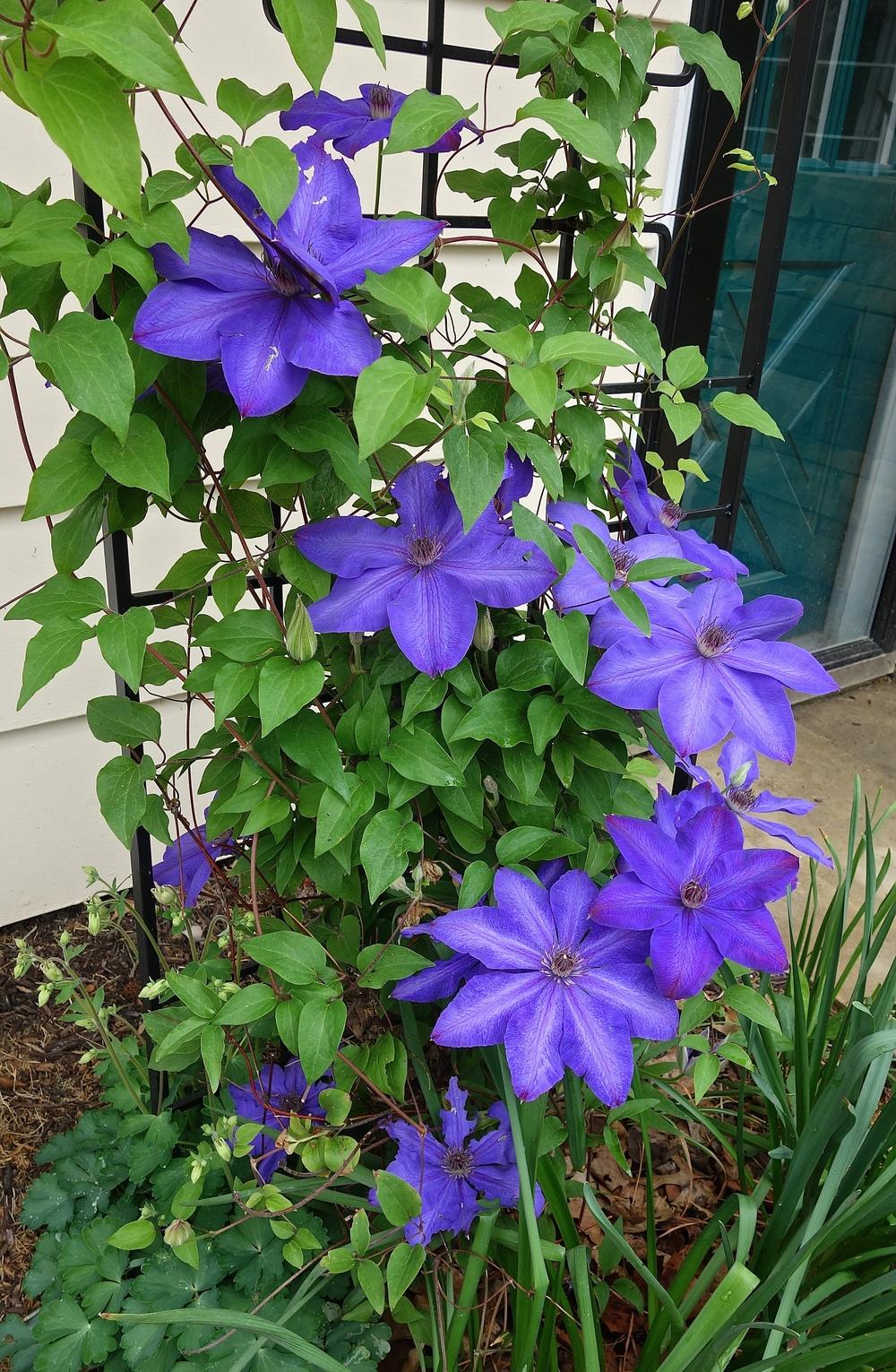Instead of imagining your garden as a flat canvas, look at it as a three-dimensional space. Picture plants growing up -- on trellises. There are a number of reasons, both aesthetic and practical, for growing plants on vertical structures.

Strategically placed, plant-covered trellises can shield you from a busy road, provide privacy, shade you from the hot summer sun, and block unsightly views.
Growing plants on vertical structures has other benefits, too. Gardenens with small spaces can maximize the use of that space by growing vining plants on trellises. Disease problems are minimized because plants receive better air circulation. Harvesting is easy and crops stay cleaner because they are suspended above the soil surface.
1. Determine how your vine climbs. Not all vines can climb all structures, so it's important to match the plant to the support. Some plants climb by twining around a support. Some use elogated leaf stalks or tendrils to anchor themselves. And some climb by attaching themselves with little adhesive disks. Examine your plant or look up the plant in a reference to determine how it climbs.
2. Choose a support. Twining plants, like pole beans, do best on trellises on which the slats or supports are less than 2 inches wide. Plants that climb with tendrils, like sweet peas, need even narrower supports. Plants that climb with adhesive disks, like many ivies, climb best on natural materials, such as wood or stone, rather than shiny vinyl.
3. Install the trellis before planting. That way, you won't disturb the root system. Anchor the trellis in the soil and/or against a building so it's sturdy enough to support the weight of the mature plant.
4. Plant your vine. Set the plant a few inches in front of the trellis. Help the vine find the support by tying it loosely to get it started on its climb.
Tips
"Climbing" roses don't actually climb, they simply produce especially long canes that can be attached to a trellis.
Choose evergreen vines for year-round privacy. Use deciduous vines to provide shade in summer but allow the sun to warm the house in winter.
Many vegetables are available in both "bush" types and "vining" types. Bush varieties remain relatively small, so for your vertical garden, choose vining or climbing types.
 Victory Seed Company has all the seeds you want for your best garden in 2024.
Victory Seed Company has all the seeds you want for your best garden in 2024.
For 25 years, the family-owned Victory Seed Company has provided the highest quality vegetable, herb and flower seeds to families across the country. We are passionate about providing you the best seeds available that give excellent germination, robust plants, and the harvest you want. With a catalog of over a thousand varieties, we have everything, and our prices are the kinds that we'd want to pay. We have hundreds of yesterday's heirloom vegetables, as well as today's award winning hybrid selections. Get to know us by visiting our website and browsing through our online vegetable seed catalog.